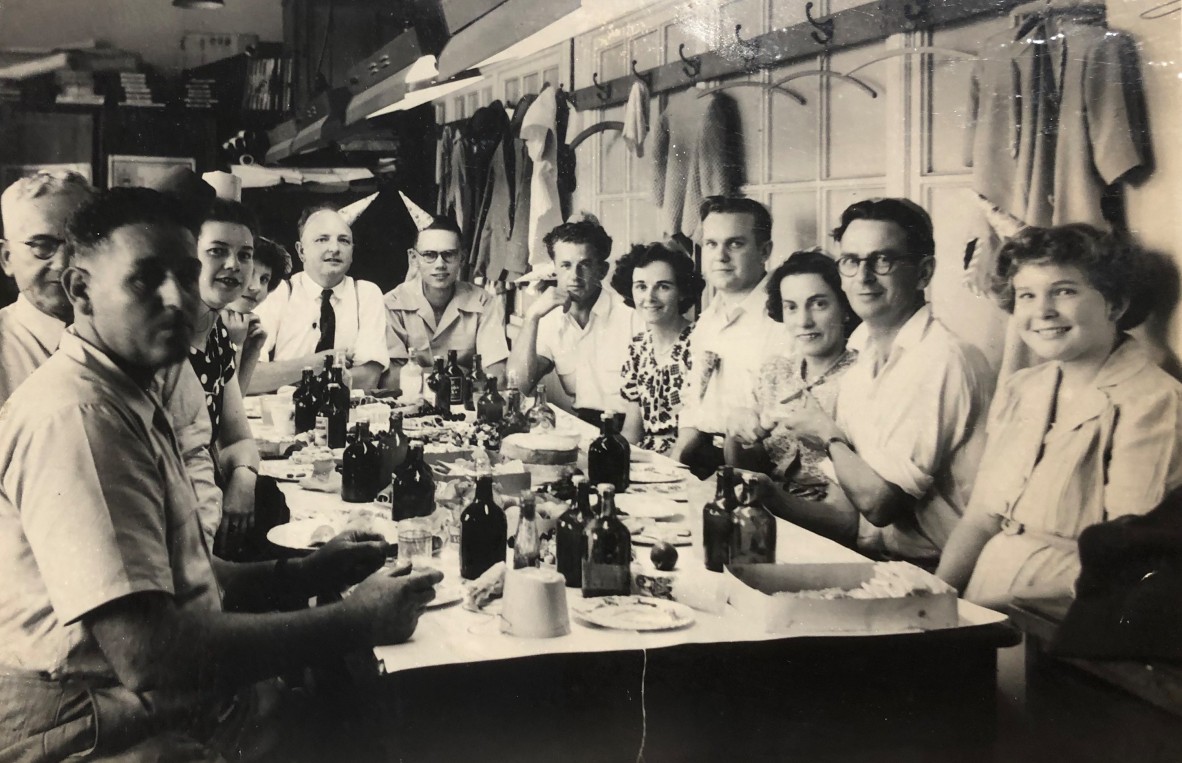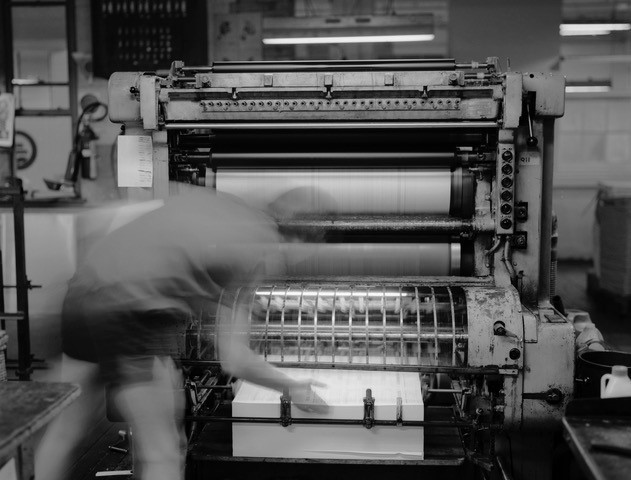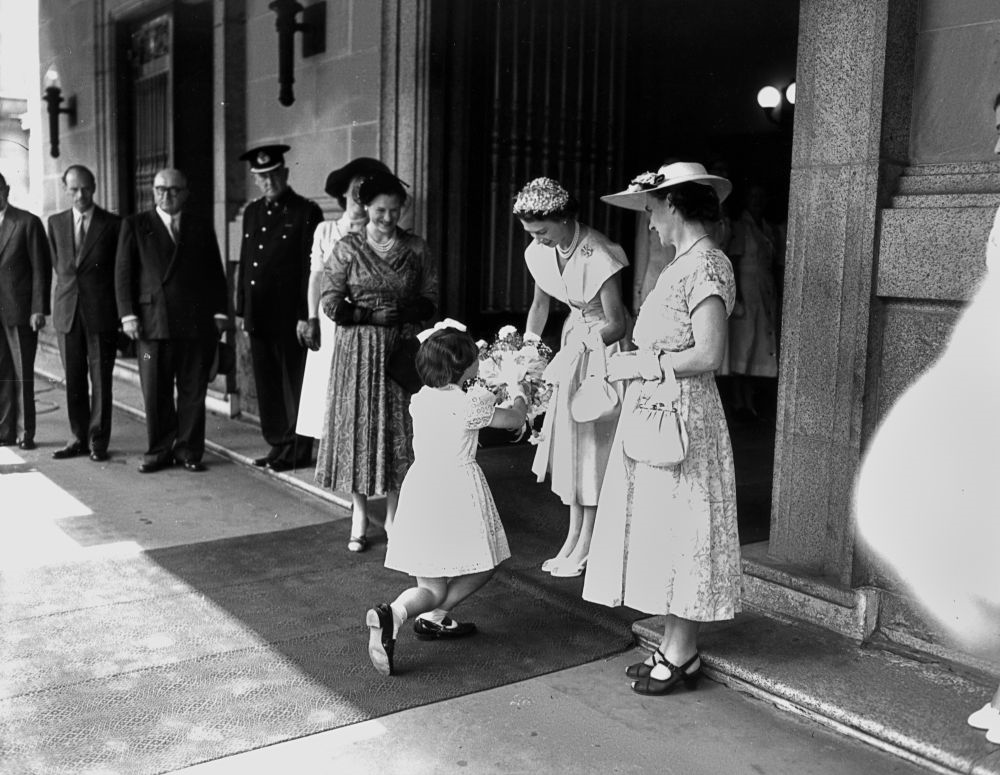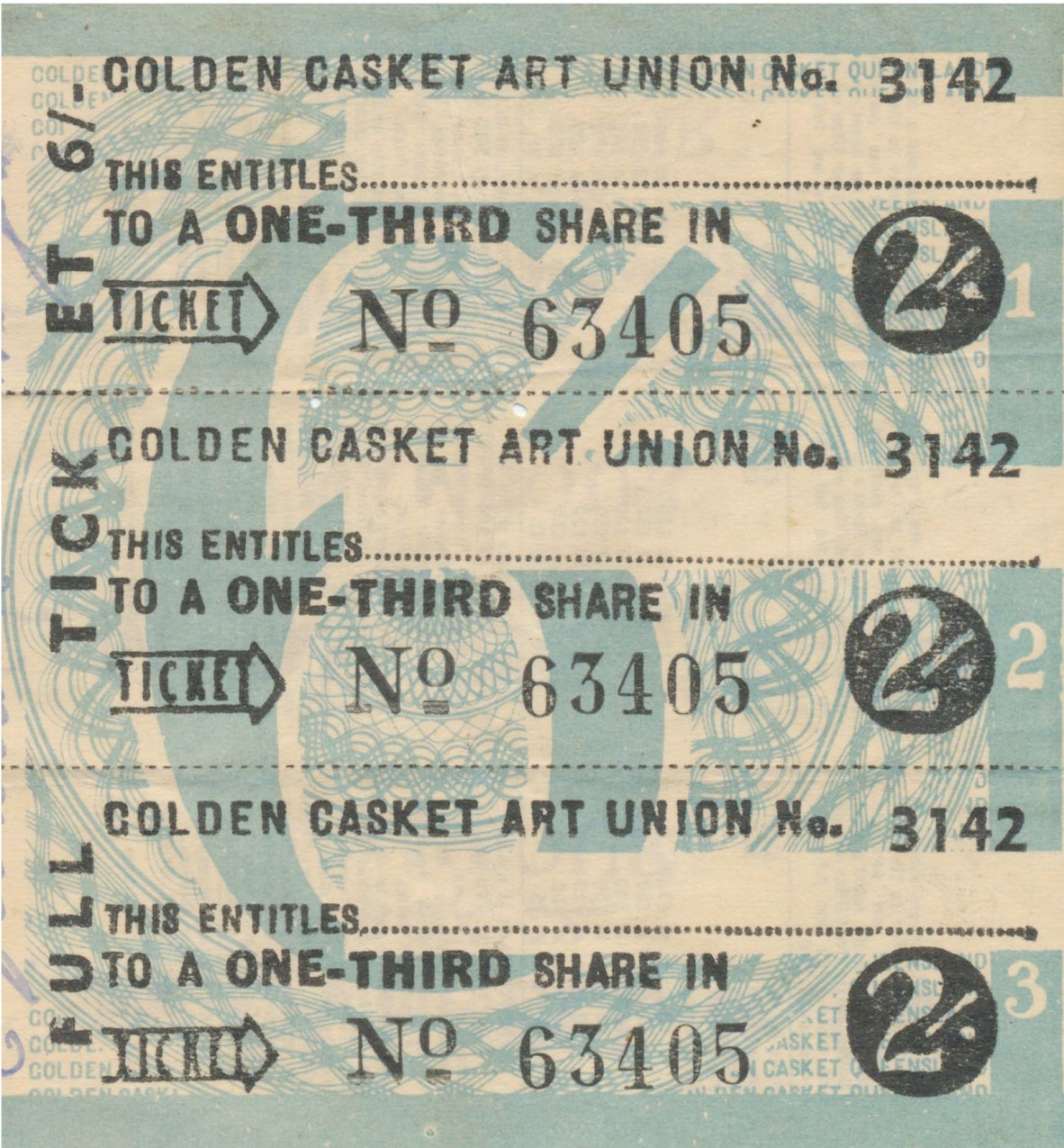The 2019 John Oxley Library Fellows are Louise Martin-Chew and Matthew Wengert who plan to jointly develop a proposal for an exhibition and a book about the Queensland Government Printing Office. This institution spans and illustrates the history of Queensland. To develop this project and tell its many stories they will draw on their respective backgrounds – Martin-Chew is an art writer and curator, Wengert an historian and publisher. Both have a long term interest in Brisbane’s history.
It is the beginning phase of our research into the visual history of Queensland’s Government Printing Office (QGPO). Last month we conducted interviews with two retired staff members. What emerges from our discussions with these two individuals, who worked at senior levels for decades in the QGPO, is a passionate belief in their work as printers. It goes deep.

The QGPO was established by 1862 and in its own purpose-built premises by 1887. For close to a century they printed almost everything required by the Colony (and then State) of Queensland … every invitation, timetable, brochure, poster, tourism pamphlet, report – and parliamentary hansard. As a result, the web of potential objects produced by the QGPO is vast, although not necessarily easy to find, particularly when the client and ostensible “publisher” could be any governmental agency.
At the outset we knew that we could not look at every item the government printer produced; instead we adopted the driver of a focus on art and design, the beautiful and memorable items produced at a high level by the QGPO. Already it is evident that its employees knew the quality of what they were producing, and the pride that remains palpable in the memory of both these ex-printers is the result. Visitors, including young photographer Peter Fischmann––who spent some days there in 1982, drawn to document the scale of the machines, the operation and the ambition of this place, its building and its workers––became aware of the camaraderie of the team and the collective effort invested in its output.

Druce Williams was an artist at the QGPO from when he started there as a boy of 15 during the war (1945). He worked there until his retirement in 1991, some 46 years. He attributes the artistry he developed to the tutelage of lithographer Jimmy Burrows. Interestingly, Williams occupied a position once held by the young artist Lloyd Rees (1895-1988). In Rees’s later writing he credited his time at the QGPO to placing him within the art milieu which eased his passage south.
The quality of the work produced by Brisbane’s QGPO is superb, visible today in the posters produced for the Queensland Tourism Bureau, the innovative design and quality of the drawings in The School Papers, books for children like writing copy books, social studies texts and Soon We’ll Read. Then there were the invitations designed for the visit of Queen Elizabeth in 1954 and more. Even the Golden Casket Lottery tickets which were produced from very early describe, in their development, sophisticated design.


George Gee, who was a camera operator at the QGPO from 1948 to 1982, was aware that the Brisbane operation was a leader in this field. The QGPO had invested in equipment but also had a background of expertise in lithographic printing. When Gee started in 1948, printing in colour was innovative and new: “We were experts at it”.
What is evident already is that the material that will tell the story of the QGPO’s innovation in art and design is available in abundance, the research within ready reach, so we won’t have to dig too deep. The major issue we face is to crystallise it in an interesting and cohesive way, creating a highly legible and engaging showcase of the “Designs, Devils and Details” that inspired this project.
Louise Martin-Chew and Matthew Wengert - 2019 John Oxley Library Fellows
Further reading:
- Historic Queensland building's 'printers' devils' to be discovered (Brisbane Times)
Comments
Your email address will not be published.
We welcome relevant, respectful comments.